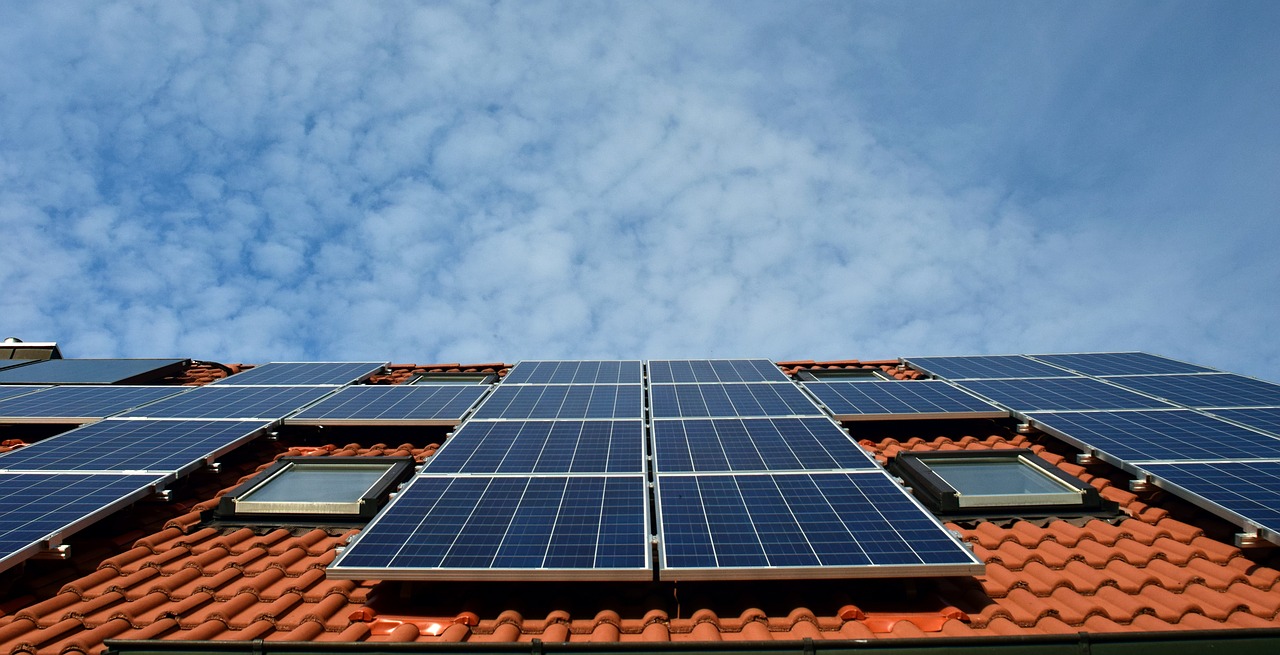Photovoltaic systems (also known as PV systems) use the energy produced by solar radiation to generate usable electricity for homes and commercial buildings. The electricity produced by solar photovoltaic systems can be used to power household appliances, lighting systems, and other devices that require electrical power.
Since photovoltaic systems use solar radiation to generate electricity, they do not need to be fitted in areas that receive a large amount of direct sunlight. All that’s required to generate electricity using a PV system is natural daylight.
How do solar photovoltaic systems work?
Solar photovoltaic systems convert solar radiation into electricity using cells. A photovoltaic cell is made up of several layers of semi conducting material such as silicon. As daylight connects with the cell, an electrical field is created across the layers and electricity begins to flow. As the light becomes more intense, the amount of electricity that flows through the cell increases.
Since solar photovoltaic systems use solar radiation as a source of electricity, they generate no greenhouse gases. The average household can reduce its carbon dioxide output by approximately 1.2 tonnes each year by switching from standard sources of electricity to a PV system. Over the course of a solar photovoltaic system’s lifespan, the average household’s carbon dioxide emissions are reduced by almost 30 tonnes.
A wide range of solar photovolatic systems are now available for UK homeowners. Unlike the large and obvious solar panels of previous decades, today’s solar photovoltaic systems are available as ‘solar tiles’ that look almost exactly the same as standard roof tiles. Traditional solar panels and transparent solar cells are also available.
Can all homes benefit from solar PV technology?
Not all homes are suitable for solar photovoltaic systems. As solar PV systems require sunlight in order to function properly, they need to be installed on a roof or wall facing within 90 degrees of south. The more obstacles (such as trees or other large buildings) stand between the photovoltaic system and the sun, the lower the system’s output will be. Solar photovoltaic panels also need to be installed on a roof or wall strong enough to support their weight.
Consult a certified and experienced solar photovoltaic systems installers to learn more about your home’s suitability for solar PV technology.
How much does it cost to install a solar photovoltaic system?
As solar photovoltaic systems are available in a large range of sizes, the price of purchasing and installing a solar PV system can vary significantly. In most cases, the type of solar PV system installed depends on the home’s electricity requirements and the availability of south-facing roof space.
Typical prices for a domestic solar photovoltaic system start from £5,000 to £7,500 per kilowatt peak (kWp) installed. Most homes use approximately 1.5 to 3 kWp. The cost of installing a solar photovoltaic system also depends on the type of system used, with solar tiles costing more than traditional solar panels.
Much of the cost of purchasing and installing a solar photovoltaic system is offset by the savings made possibly by using solar electricity. A typical 2.5 kWp solar photovoltaic system provides enough electricity to reduce a home’s electricity bill by almost 50 per cent, or £250 per year.



